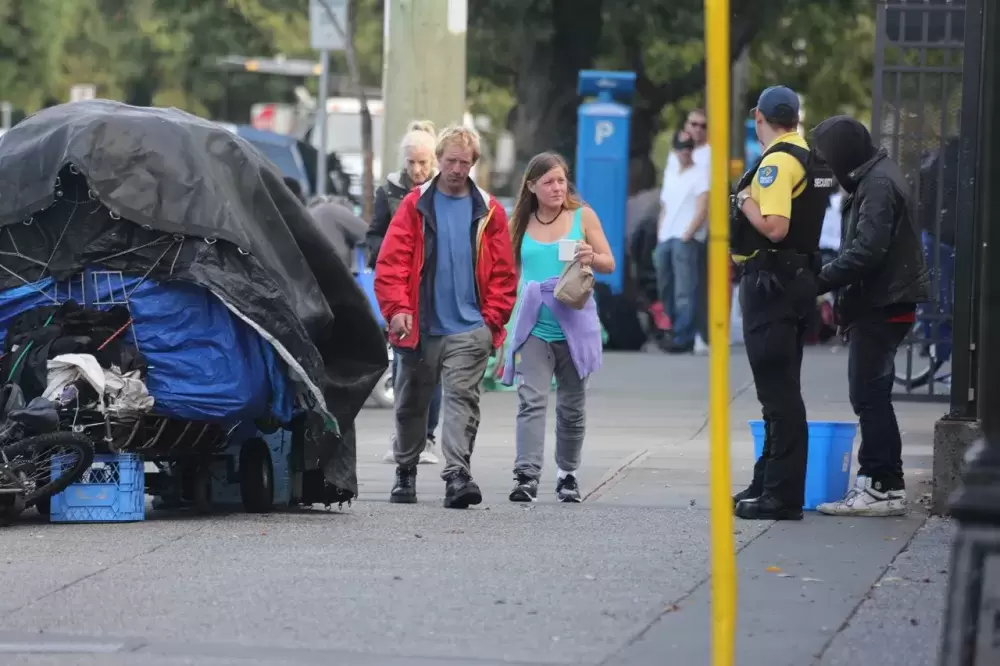Data recently released by the BC Coroners Service show that the COVID-19 pandemic is continuing to bring high numbers of fatal overdoses, with 147 suspected illicit drug deaths in August.
This shows a 71 per cent increase over the deadly tally from August last year, but a continued decline from the results earlier in the summer. In May, June and July respective totals of 180, 181, and 176 have now been reported by the Coroners Service.
Males account for 862 of the 1,068 illicit drug fatalities reported in B.C. over the first eight months of this year.
The First Nations Health Authority has highlighted the extent that B.C.’s ongoing opioid crisis has affected Indigenous people, who face a fatality rate five times that of the rest of the province. In a recently released video interview Dr. Nel Wieman, FNHA's deputy chief medical health officer, noted how the pandemic has brought a rise in overdoses, escalating the opioid crisis back to a level public health faced four years ago.
“Over the years, from 2016 to 2019, we were actually making an impact,” said Wieman of the progress seen in recent years before COVID-19 hit. “Because of the pandemic, we are seeing an incredible rise to numbers that we haven’t even seen before.”
Public health officials have pointed to the effects of limiting services to follow social distancing measures during the early months of the pandemic. Some safe injection sites, like The Harbour in Victoria, shut down their walk-in services altogether, instead offering mobile assistance for drug use. In June The Harbour reopened its Pandora Avenue location to walk ins.
“When we went into lockdown during the pandemic, a lot of the prevention and harm reduction services had to either shut down, reduce their services, reduce access,” said Wieman. “Treatment centres were closed for a period of time. It took a while, I think, three or four months into the pandemic, for services to again figure out how they were going to operate under these new public health measures.”
Port Alberni’s overdose prevention site in Third Avenue has remained open throughout the pandemic, although only recently has traffic returned to its pre-pandemic levels. Wes Hewitt, executive director of the Port Alberni Shelter Society, believes that during the spring people didn’t lessen their use of illicit drugs – but not as many were coming to the supervised location.
He finds this concerning, as these drug users weren’t given the opportunity for treatment they could otherwise reach out for at the OPS. A number of factors are at play, including in some cases injections of cash from COVID-era government assistance programs, said Hewitt.
“When an individual has drugs or substance, it’s quite easy to have friends and a place to stay,” he added.
The Coroners Service reports that Fentanyl has risen in prevalence since 2015. Cocaine and methamphetamine are other common substances contributing to fatal overdoses, but Fentanyl has surpassed all others to be a factor in almost 90 per cent of B.C.’s overdose deaths, according to the coroner. Originally developed pharmaceutically for pain management, Fentanyl is a synthetic opioid that is up to 100 times stronger than morphine.
A minority of clients at Port Alberni’s overdose site have their drugs tested for Fentanyl, using a dipstick method to yield either positive or negative results.
“Over 80 per cent of the drugs that we test, test positive for Fentanyl,” said Hewitt, adding that most of these clients opt to consume the drugs anyway after a positive test. “We test not just what people think is heroin, but crystal meth, cocaine, we’ve also tested marijuana that is tested positive for fentanyl.”







